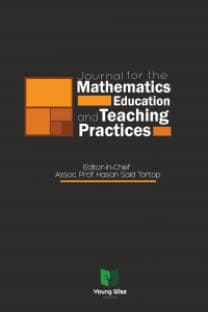Improving students’ mathematics achievements using classroom interventions
Improving students’ mathematics achievements using classroom interventions
Intervention, student achievements, Concept understanding,
___
- Bailey, T. (2009). Rethinking developmental education in community college (Issue Brief No. 40). New York, NY: Community College Research Center Publications.
- Burris,C.C., Heubert,J., & Levin,H.(2006). Accelerating Mathematics Achievement Using Heterogeneous Grouping: American Educational Research Journal. https://doi.org/10.3102/00028312043001105
- Balfanz, R.,Brynes.,& Iver,D. (2006). The implementation and impact of evidence-based mathematics reforms in high- poverty middle schools: A multi-site, multi-year study. Journal for Research in Mathematics Education 37(1), 33-64
- Codding, R. S., Volpe, R. J., & Poncy, B. C. (2017). Effective math interventions: A guide to improving whole-number knowledge. New York, NY: Guilford Press
- Connor, C. M., Piasta, S. B., Fishman, B., Glasney, S., Schatschneider, C., Crowe, E., Underwood, P., & Morrison,F. J. (2009). Individualizing student instruction precisely: effects of child x instruction interaction on first graders' literacy development. Child Development, 80(2), 77-100.
- Danielson, L. (2009). Tiered Intervention at the High School Level: National High School Center. http://www.betterhighschools.org/expert/ask_tiered.asp
- Gersten, R., Beckmann, S., Clarke, B., Foegen, A., Marsh, L., Star, J. R., & Witzel, B. (2009). Assisting students struggling with mathematics: Response to Intervention (RtI) for elementary and middle schools (NCEE 2009- 4060)
- Griffin, S. A. (2004). Building number sense with number worlds: A mathematics program for young children.Early Childhood Research Quarterly, 19(1), 17.
- Hecht, S. A. & Vagi, K. J. (2010). Sources of group and individual differences in emerging fraction skills. Journal of Educational Psychology, 102, 843–859. doi: 10.1037/a0019824.
- Hiebert, J., & Carpenter, T. P. (1992). Learning and teaching with understanding. In D. A. Grouws (Ed.), Handbook of research on mathematics teaching and learning (pp. 65–97). New York: Macmillan.
- Hines, A. (2016). A Mixed-Methods Program Evaluation of Two Middle School Mathematics Intervention Programs: Education Dissertations and Projects. https://digitalcommons.gardner-webb.edu/education.
- Institute of Education Sciences, National Center for Education Statistics, Digest of Education Statistics 2014. https://nces.ed.gov/programs/digest/d14/tables/dt14_326.20.asp
- Jones, I., Inglis, M., Gilmore, C., & Evans, R. (2013). Teaching the substitutive conception of the equals sign. Research in Mathematics Education, 15(1), 34–49.
- Lynch, M. (2019). Types of Classroom Interventions: The Edvocate. https://www.theedadvocate.org/types-of-classroom-interventions/
- Matthews, P. G. & Rittle-Johnson, B. (2009). In pursuit of knowledge: comparing self- explanations, concepts, and procedures as pedagogical tools. Journal of Experimental Child Psychology, 104, 1–21. doi: 10.1016/j.jecp.2008.08.004.
- Miller, S. P. and Hudson, P. J. (2007), Using evidence-based practices to build mathematics competence related to conceptual, procedural, and declarative Knowledge. Learning Disabilities Research & Practice, 22(1), 47–57.
- Twigg, C. A. (2003). Improving learning and reducing costs: New models for online learning. The National Center for Academic Transformation. http://thencat.org/whoweare.htm
- Yayın Aralığı: Yılda 2 Sayı
- Başlangıç: 2020
- Yayıncı: Genç Bilge Yayıncılık
Conceptual technique for comparison figures by geometric thinking in analysis level
What I learned from Budapest Semester in Mathematics Education
Yousef M. ABD ALGANİ, Younis ABU AL-HAİJA, Wafiq HİBİ
Improving students’ mathematics achievements using classroom interventions
